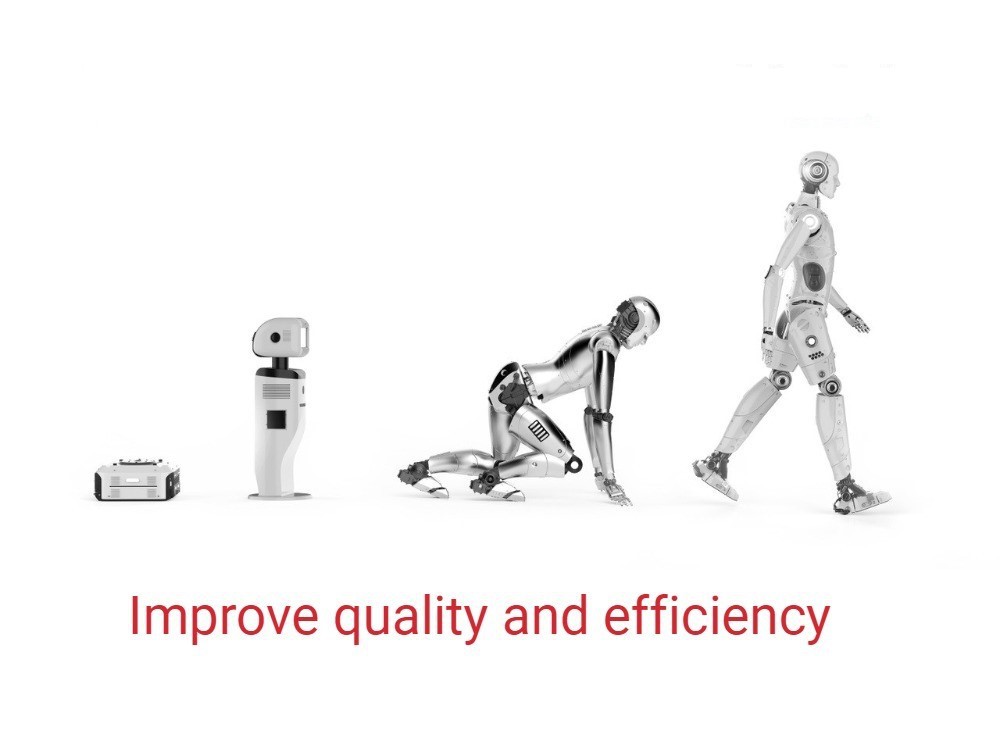The Continuous Improvement Model is a tactical method that’s implemented across a company to provide a roadmap for improving its practices.
Different models exist such as Lean and Six Sigma and can vary in terms of structure, but the goal is to purge your enterprise of excess and improve the quality and efficiency of work processes.
Different models
Lean
Lean is the most important mainstay of the model. It works to rid companies of inefficiency. Within this concept, four models are profiled:
Six Sigma
Six Sigma is the more popular and visibly recognized version of Lean in these business practices. Six Sigma is a Continuous Improvement Model that centers on enhancing consistency and getting rid of variability.
Six Sigma seeks to attain stable and predictable process results. This is achieved by having a clear roadmap and procedures in place that can be measured to attain improvement for a company’s future.
As a meticulous and data-driven approach, Six Sigma focuses on quality over quantity by being ensconced in statistical analysis.
To succeed, Six Sigma depends on a strong group of individuals who bring specific expertise to see the Continuous Improvement Model through. These experts come prepared and have extensive credentials and certifications to help with the process.
Kaizen
Kaizen originates from the Japanese word meaning “change for the better.” Kaizen is another form of the Continuous Improvement Model that works to better the process of ebbs and flows within an organization.
Differences
The difference between Six Sigma and Kaizen is that Six Sigma is more organized, and Kaizen is less rigid.
At the heart of Kaizen is a conviction and mentality that allows organizations to eradicate waste, improve work quality, and inspire employees to bring their A-game in the improvement of their daily work.
Also, Six Sigma has clearly defined roles where Kaizen has no defined chain of command in the Continuous Improvement Model.
With Flow Kaizen, the structure is geared towards the process and flow of information and materials. Additionally, Process Kaizen is the improvement of individual and team processes. Both Flow and Process Kaizen use disciplined research whereby changes can be adjusted along the way.
Companies using the Continuous Improvement Model can adapt as they work in the marketplace via experimenting. The result is Flow and Process Kaizen allow for improvements to continue and to be monitored.
Theory of constraints
This theory uses a model to contain problems that slow down the process and works to improve the system. This happens when you reduce one constraint and then identify the next one.
Total quality management (TQM)
TQM focuses on employee engagement, organized thinking, and other concepts to improve business from the ground up.
Continuous Improvement Model: examples
The Continuous Improvement Model doesn’t stop working once you have achieved your goals. As the term states, it aims for constant modifications, so the result is always being perfected.
1. Think tanks and ideation
Think tank’s goal is to have an innovative dialogue with employees, which can occur in different ways. By flushing out different perspectives — no idea is a bad one — a seed can be planted to grow new ideas. By implementing these strategies, companies gain better insights into future possibilities.
2. Training for employees
Training is an important part of any company’s strategic goals to align people with the latest technology and ideas.
By training employees in different areas, the Continuous Improvement Model works. A good example is when someone is out sick: by knowing the aspects of another employee’s job, someone can fill in for them while they are away.
3. Surveys and Polls
With so many platforms used today, surveys and polls have become an important part of a companies’ voice to keep track of improvements needed. Every idea matters and surveys and polls help drive this point home.
Conclusion
As an ongoing process model, a sound strategy is in place to improve your business. The end game is to optimize the outcome for the best results to leverage for your enterprise.
Learn how to start an organizational culture that drives results.
